Two churches in mission: the work of obedience
Kate Azumah
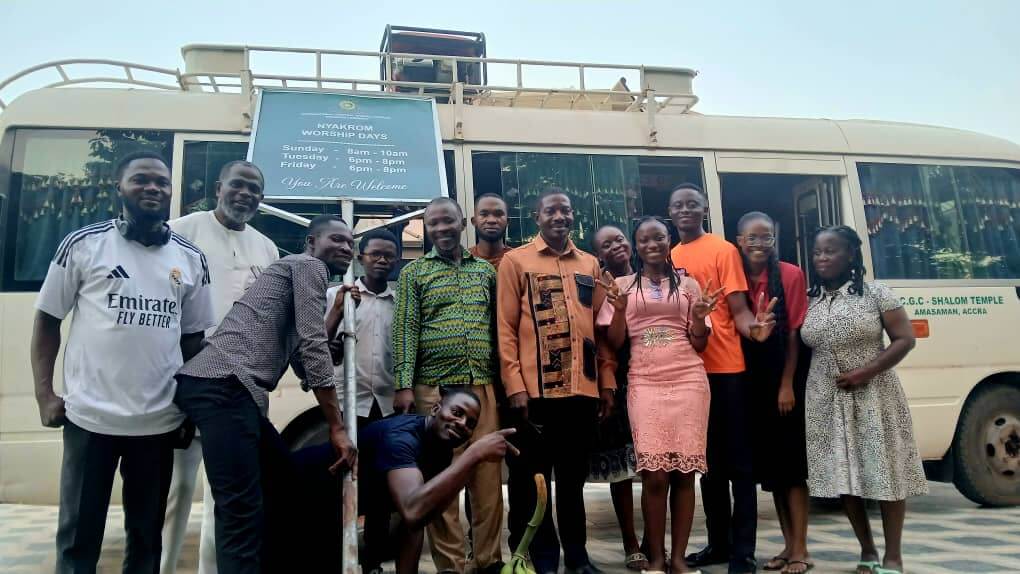
Listen to this article
Ghana:
When Rev. William Tsinigo was a second-year student at his Bible School, he decided to plant a church where he could put into practice what he was learning. But God had bigger plans. His church, the International Central Gospel Church (ICGC), Shalom Temple branch, now has 800 members, has planted about 50 churches, and spends 55 per cent of its annual budget on missions. It all started with a missions course he attended in 2008.
The Kairos course
“I had a call to missions, but I didn’t know how to go about it until I was invited to take the Kairos course. It so impacted me that right afterwards, I went on a fast to seek God’s direction on what to do with my new exposure to missions. On the third day, I saw a vision of many people caught in a fishing net. They couldn’t see, speak, or get out. They were eating their faeces and drinking their urine, and I heard the Lord say, ‘Release them.’”
About three weeks later, a church member visited Rev. Tsinigo. His work had transferred him to Lawra in the Upper West region of Ghana and he requested prayers. “While I prayed, I had the urge to ask him to enquire about the possibility of planting a church there.” The church member reported back and Rev. Tsinigo followed up himself with a visit to the town to do spiritual mapping.
A vision for missions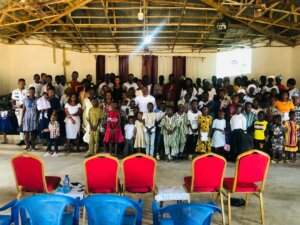
“When I returned, I informed my leaders and deacons that we were going on a mission trip. We mobilized resources, took 21 church members and spent a week evangelizing. Many people gave their lives to Christ, including Muslims, and we started a church. The church is now one of the biggest in Lawra.”
Three months after this first trip, Rev. Tsinigo mobilized his church for a second mission trip to Jirapa, a town they had passed on their way to Lawra.
“While in a prayer meeting on this trip, I had a second vision. I was in Accra on a Sunday and decided to visit a branch of my church denomination. We entered the church and in the first row, everyone was sleeping. The second row had people selling items. When we got to the last row, it turned into a recreational centre.”
“After the vision, I cried out to the Lord for its meaning. He told me it was about the kinds of people who go to church – the sleeping ones who do nothing for God’s Kingdom, those who go to seek prosperity, and those who go to be entertained. The Lord asked me if I wanted my church to be like that. The two visions propelled us to adopt the Upper West region for missions.”
Training for missions
Around this time, Rev. Tsinigo was the coordinator for the Living Word School of Ministry (now Daniel Institute) established by his denomination. He used his role to raise pastors for missions. He also started a missions college at his church to train his members.
“When I discover church members who have a call, we sponsor them to attend the Daniel Institute and send them to plant churches. I arranged for 36 pastors to participate in the Kairos course, and some have planted churches.”
Success in missions
“While participating in the Perspectives course, the lesson on heart commitment stirred me. I took inspiration from the apostles in the Book of Acts who were planting churches everywhere. November is our missions month. We teach on missions and encourage people to support missions.”

ICGC mission church planted at Bimbila
By the year 2020, Shalom Temple had planted 29 churches in northern Ghana and 21 churches around their church community in Accra. They try to use the local languages in the churches up north and raise indigenous people to lead them. It hasn’t been all rosy though. They planted a church in one of the northern towns but no one responded.
“Mobilizing people is difficult but the leadership of my church are very supportive. They consented for us to allot a huge percentage of our income for missions. Some church members and ICGC pastors from other districts also contribute generously.”
“We hope to send missionaries among the unreached and to other countries. It’s not something our denomination does and so we’ve been praying about it.”
“I see the African Church as sleeping. Many Christians hardly evangelize. We need to do something to revive the African Church for missions.”
Burkina Faso:
The Assemblies of God (AG) Church in Burkina Faso was started in 1921 by missionaries from the USA. The church’s indigenous missionary work began officially in 1982, but prior to that, individuals in the church went voluntarily as missionaries.
Volunteer missionaries
Dr. Jacques Delewende Compaore, the external missions director, shares, “As early as 1949, Ps. Bila Passego went to Togo. In 1959, Kenga Zongo went to Senegal and Ps. Gomtanga Yanogo went to Benin. These missionaries went without support from the church apart from prayer. There was no agency to visit or encourage them but they made great impact. Ps. Passego started AG in Togo and the AG in Ghana was started from Burkina Faso.”
Church responsibility
In 1982, four AG pastors collaborated to develop a missions vision for the church. They felt that the national church wasn’t doing enough. They were evangelizing within, but seeing how missionaries came to them, they felt obliged to share the gospel with people outside Burkina Faso. They couldn’t let people continue to go as missionaries without support from the church.
“The four pastors toured the country to cast the vision for missions at regional pastoral gatherings. Other pastors began to understand missions and returned home to share this with their congregations. Myself for example, I began organizing mission conventions every
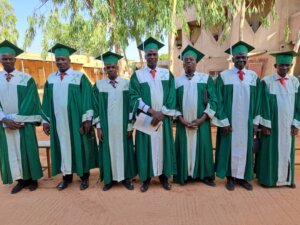
Students graduate from AG’s Mission Institute
November. We rally our members to contribute their resources and skills for missions. We’ve been doing this for 25 years because new converts need to be involved in missions too.”
Awareness and action
Dr. Jacques doubles as the national coordinator for Simply Mobilizing, so he uses the Kairos course and The Unfinished Story to mobilize for missions. He goes around the country meeting other church leaders to create missions awareness and involvement. “At one Kairos course, a participant asked, ‘Where were you before? We made so many mistakes in missions!’”
Every year, the Burkina Faso AG trains more than 500 pastors at their seminaries. Missionaries are recruited from these pastors who are serving in their local churches. The church gives them missions training for another year or two. During the training, they are sent on short-term trips from time to time. They bring reports and then the school gives them further training.
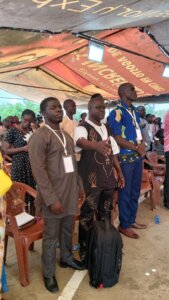
Missionary Dolkoum in Gambia
After mission school, they return to their churches to share their mission vision and seek support. When they have raised enough to cover their budget for three years, they go where God is sending them. The budget covers their rent, health, upkeep, children’s schooling, evangelism projects, and a motorbike or vehicle.
For lay members called to missions, the church equips and sends them to places where a fully-trained missionary is present. They support the missionary’s work with their gifts and skills.
In all the 6000 local AG churches, every first Sunday in July is dedicated to missions. All the tithes and offerings received go to missions.
Sending and going
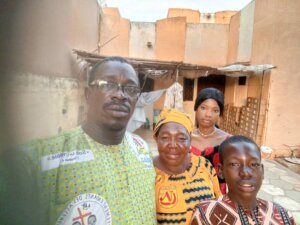
Missionary couple in Senegal at the border of Mauritania
“So far, we have sent 67 missionaries to Mauritania, Mali, Chad, Niger,
North Africa, Europe, USA, etc. We plan to make that 100 in three years. We never run out of candidates. We still have others who volunteer to go with support from friends and family. We only pray and send them. We build schools in some countries to reach children with the gospel. Sometimes, our missionaries leave because life on the field can be hard. We had 10 missionaries in Chad, but only two remain.”
Commitment and charge
“It’s the African Church’s turn to do missions. We can send more missionaries if all the Church is mobilized. Only 1.5 per cent of the African Church’s budget goes to missions. Jerusalem wasn’t totally evangelized before God sent missionaries from there to other places. Jerusalem wasn’t totally evangelized before God sent missionaries from there to other places. We look to God for the courage to start something and then he does the rest.”
photo at top: Rev. Tsinigo (brown shirt) with church members on a mission trip
 Called by God, Questioned by Family
Called by God, Questioned by Family Read More
Read More